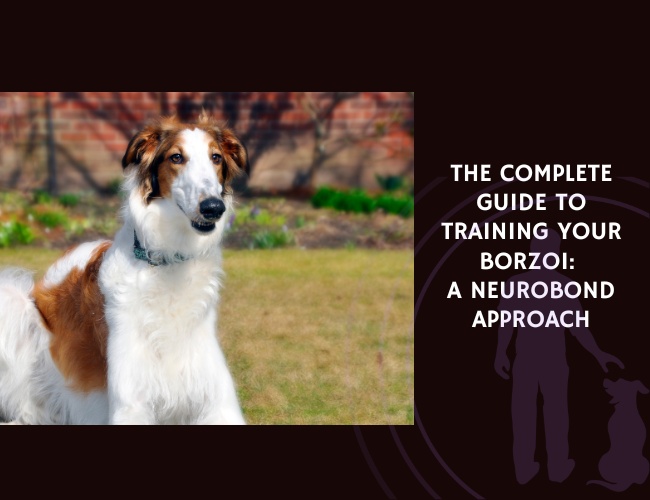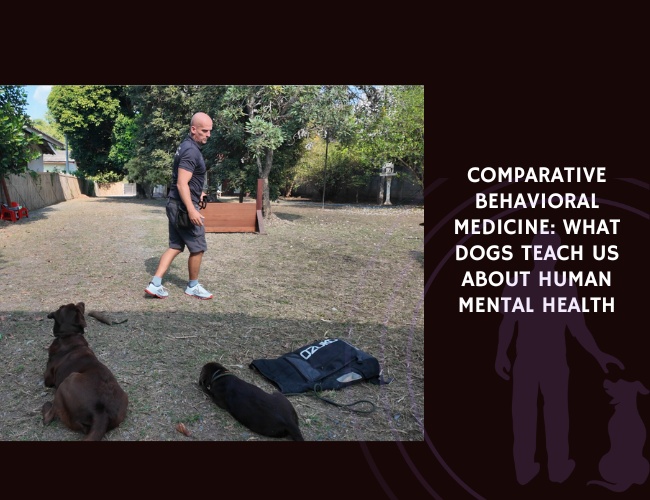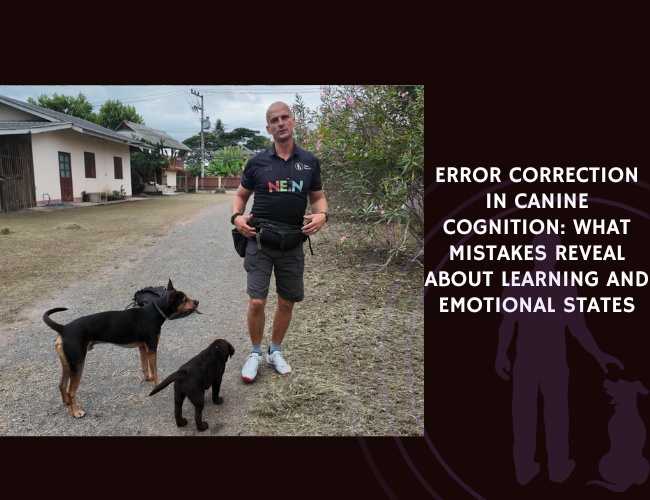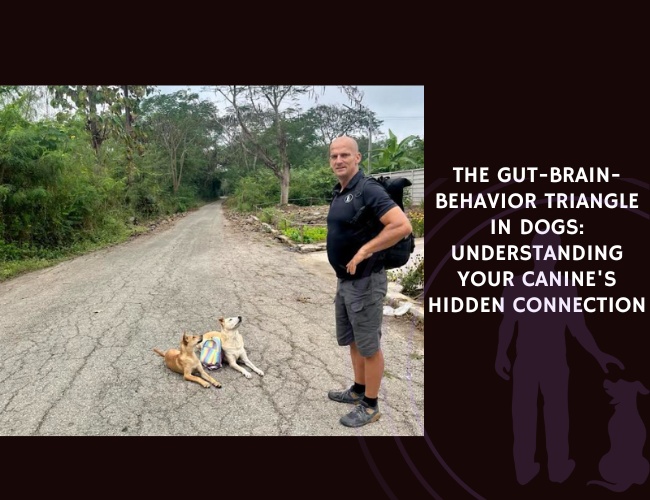Introduction: Understanding Your Aristocratic Companion
The Borzoi stands as one of the most enigmatic breeds in the canine world—a creature of breathtaking elegance whose training journey requires us to rethink everything we thought we knew about dog education. These aristocratic sighthounds, with their centuries-old heritage of independent hunting across vast Russian steppes, carry within them a unique cognitive architecture that doesn’t fit neatly into conventional training boxes. When you bring a Borzoi into your life, you’re not just adopting a dog; you’re entering into a partnership with an independent thinker whose ancestors made life-or-death decisions at distances far from human guidance.
Let us guide you through a revolutionary approach to Borzoi training—one that honors their independence while building an invisible leash of trust and connection. The NeuroBond method doesn’t seek to suppress your Borzoi’s natural instincts but rather channels them into a harmonious relationship where both human and hound thrive. 🐾
Character & Behavior: The Independent Thinker
Understanding the Borzoi Mind
Your Borzoi’s behavior isn’t random—it’s the product of centuries of selective breeding for independent decision-making. Unlike breeds developed for constant human collaboration, Borzois were designed to think for themselves. This means when your Borzoi seems to “ignore” a command, they’re actually processing whether your request makes sense in their current context. They’re not being stubborn; they’re being thoughtful.
Research on sighthound cognition reveals that Borzois possess what behaviorists call “contextual intelligence.” They excel at understanding situations holistically, reading the entire environment rather than focusing solely on human commands. This sophisticated processing system means your Borzoi might notice the rabbit in the bushes 200 yards away while you’re asking for a “sit”—and in their mind, the rabbit information is far more relevant.
The Sensitivity Factor
Perhaps no trait defines the Borzoi training experience more than their profound emotional sensitivity. These dogs possess what neuroscientists might describe as heightened amygdala responsiveness—they feel everything deeply. A harsh word can shut down a training session for days. A frustrated sigh might cause them to withdraw. But here’s where the NeuroBond approach shines: we don’t see this sensitivity as a weakness to overcome but as a communication channel to embrace.
When we allow the Borzoi to be himself—honoring his sensitive nature rather than trying to “toughen him up”—something magical happens. That sensitivity becomes the very foundation of deep connection. Your Borzoi learns to read your emotions as carefully as you learn to read his, creating a feedback loop of mutual understanding that transcends traditional command-response training.
The Indoor-Outdoor Paradox
You might notice your Borzoi transforms between environments. Indoors, they’re often described as “cat-like”—calm, graceful, content to lounge on the sofa for hours. But outdoors? That’s when their ancestral programming activates. The sight of movement triggers neural pathways laid down over centuries, flooding their system with neurochemicals that scream “chase!” This isn’t disobedience; it’s biology.
The NeuroBond method recognizes this duality and works with it. We don’t try to suppress the outdoor hunter or activate the indoor couch potato. Instead, we create structured contexts where both aspects of your Borzoi’s nature can express themselves appropriately. 🧠
Vocalization & Communication: How Your Borzoi “Talks”
The Language of Subtlety
Borzois aren’t typically vocal dogs in the traditional sense—you won’t get the constant commentary of a Beagle or the alert barking of a German Shepherd. Instead, they communicate through what we call “whisper signals.” A slight shift in ear position might indicate uncertainty. A gentle lean against your leg could be their way of saying “I need reassurance.” The barely audible sigh might mean “I’m not comfortable with this situation.”
Learning to read these subtle communications is essential to the NeuroBond approach. When we tune into these whisper signals, we’re showing our Borzoi that we’re listening—really listening. This validation of their communication style builds trust exponentially faster than any treat-based training protocol.
Stress Signals and Emotional States
Your Borzoi’s body is constantly broadcasting emotional information. Watch for these key indicators:
- The freeze: When overwhelmed, Borzois often become statue-still. This isn’t stubbornness—it’s emotional overload
- The tremble: Fine trembling, especially in the hindquarters, indicates stress or excitement overload
- The withdrawal: Physically moving away or behind you signals “I need space to process this”
- The soft eye: When relaxed and trusting, their eyes become soft and slightly squinted—this is your green light for engagement
Understanding these signals allows us to practice what the NeuroBond philosophy calls “responsive training”—adjusting our approach in real-time based on the dog’s emotional feedback.
Building the Communication Bridge
The first step in NeuroBond training isn’t teaching commands—it’s establishing a communication protocol. We start by simply observing. Spend a week doing nothing but watching your Borzoi. Notice when they check in with you naturally. See how they problem-solve on their own. Watch their decision-making process when faced with choices.
This observation phase serves two purposes: it teaches you their unique communication style, and it shows them that you’re interested in understanding them as an individual. This mutual respect becomes the foundation upon which all training builds.
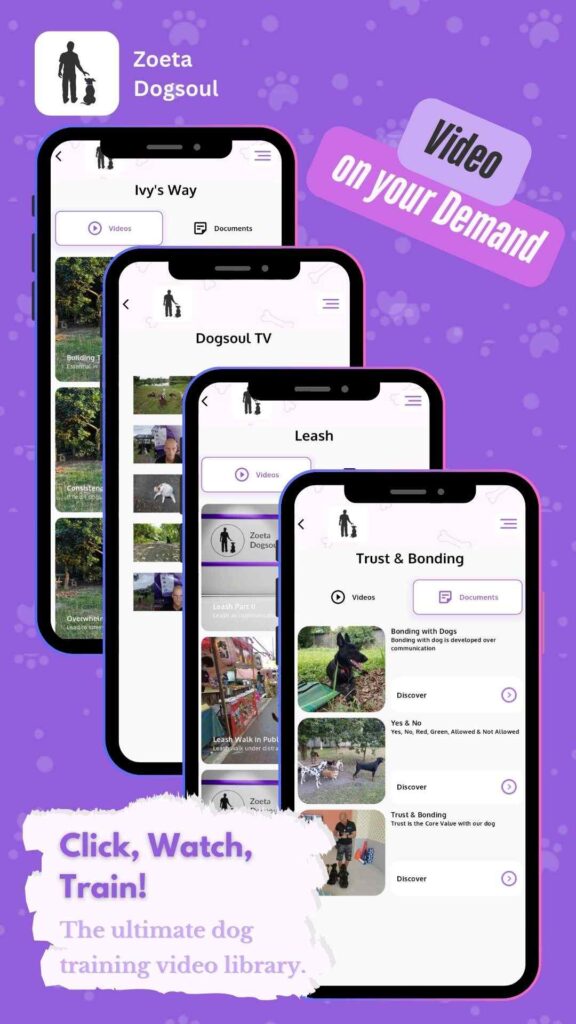
Training & Education: The NeuroBond Method in Action
Connection Over Control: The Fundamental Shift
Traditional obedience training often fails with Borzois because it prioritizes control over connection. The NeuroBond approach flips this entirely. We’re not trying to create a robot that responds mechanically to commands. We’re building a relationship where your Borzoi chooses to cooperate because the bond between you makes cooperation feel natural.
This starts with what we call “voluntary attention.” Instead of demanding eye contact, we wait for your Borzoi to offer it. When they glance at you during a walk—even for a split second—that’s gold. Mark it, reward it, celebrate it. You’re not training a behavior; you’re strengthening a neural pathway that says “checking in with my human feels good.”
The Standing Leash Technique
Here’s a perfect example of letting the dog find his own solution. When your Borzoi pulls on the leash, don’t yank back. Simply stop moving and step on the leash about 18 inches from his collar, creating a boundary but not a correction. Now wait. Your Borzoi will try several solutions—pulling harder, circling, perhaps whining. Eventually, he’ll discover that sitting or lying down releases the pressure.
The moment he finds this solution himself—reward it enthusiastically. You’ve just let him learn through his own experience that calm behavior creates comfort. This self-discovered learning creates far more lasting change than any commanded “heel” ever could.
Building the Invisible Leash
The ultimate goal of NeuroBond training is the invisible leash—a connection so strong that physical restraint becomes almost unnecessary (though we always recommend physical safety measures with sighthounds). This doesn’t happen overnight. It builds through thousands of micro-moments of connection:
- The glance back at you during a sniff session
- The pause before chasing a leaf to check if you’re coming
- The voluntary return to your side after exploring
- The seeking of your presence when uncertain
Each of these moments strengthens the neural pathways that create voluntary proximity. Your Borzoi learns that being near you is where good things happen, where safety exists, where life makes sense.
Word Associations vs. Commands
In the NeuroBond framework, we don’t teach “commands”—we build word associations. The difference is crucial. A command implies “you must do this.” An association suggests “this word means this opportunity.” When you say “let’s walk,” you’re not commanding locomotion; you’re inviting participation in a shared activity.
This semantic difference might seem subtle, but to a sensitive, independent thinker like a Borzoi, it’s everything. They’re far more likely to participate in an invitation than comply with a demand.
Performance & Activities: Channeling Natural Instincts
Understanding Prey Drive as a Feature, Not a Bug
Your Borzoi’s prey drive isn’t something to suppress—it’s a sophisticated neurological system that, when properly channeled, becomes a powerful training tool. The sight of movement triggers a cascade of neurochemicals including dopamine and norepinephrine, creating a state of intense focus and motivation. The NeuroBond approach asks: how can we use this natural high to strengthen our connection?
Structured activities like lure coursing don’t just provide exercise—they create controlled contexts where your Borzoi can express their deepest instincts while maintaining connection with you. You become the facilitator of their joy, not the suppressor of their nature. This shift in role from controller to enabler fundamentally changes your relationship dynamic.
The Flow State Protocol
Borzois excel when they can enter what psychologists call “flow state”—that zone of perfect engagement where challenge meets skill. Activities that promote flow include:
- Controlled sprinting sessions: Using a long line in a safe area, allowing full-speed runs with built-in check-ins
- Puzzle hunting: Hiding treats or toys in increasingly complex patterns, engaging their problem-solving abilities
- Movement meditation: Slow, synchronized walking where you match each other’s pace, building rhythmic connection
- Visual tracking games: Using toys on strings to engage their sight-hunting instincts in controlled ways
Each activity should last just long enough to satisfy but not exhaust. Remember, a satisfied Borzoi is a cooperative Borzoi.
The Energy Management Equation
Here’s what many trainers miss about Borzois: they don’t need hours of exercise—they need the RIGHT exercise. A five-minute full-speed sprint can be more satisfying than an hour-long walk. The NeuroBond approach recognizes that energy management isn’t about depletion; it’s about appropriate expression.
Create a weekly rhythm that includes:
- High-intensity burst opportunities (2-3 times per week)
- Gentle exploration walks (daily)
- Mental stimulation through training games (daily, 5-10 minutes)
- Complete rest and recovery (equally important!)
When their energy is properly channeled, training becomes effortless because they’re not fighting internal pressure to run, chase, and hunt. 🧡
Elegant. Sensitive. Independent.
Heritage fuels autonomy. Bred to hunt across vast Russian steppes, Borzois carry centuries of independent decision-making, weighing context over blind obedience in every choice.
Sensitivity deepens connection. Their heightened emotional awareness turns harshness into retreat but transforms patience and empathy into profound trust and mutual understanding.
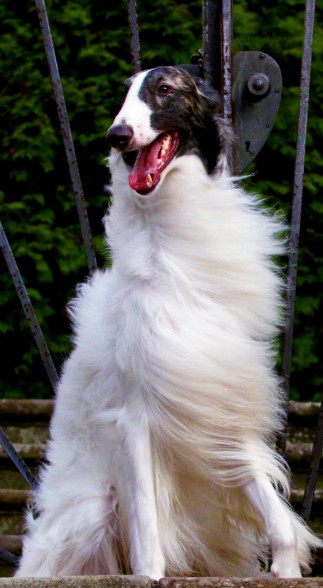
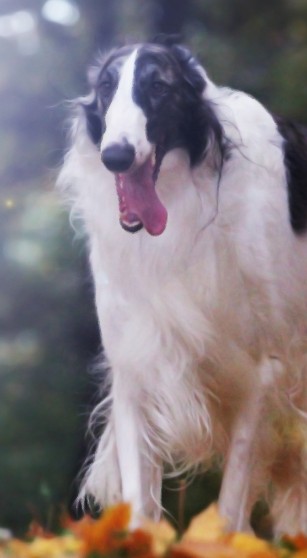
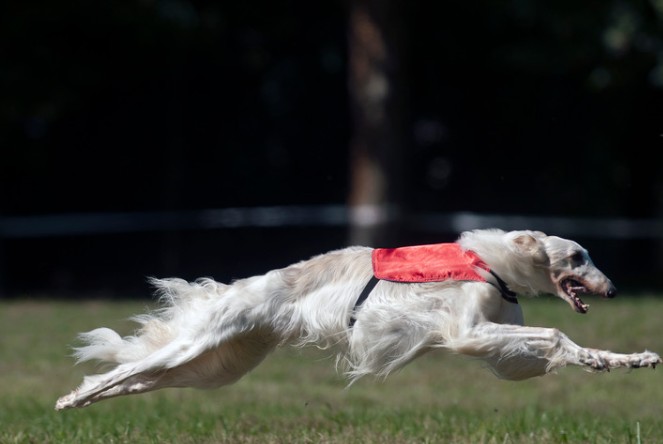
Duality shapes training. Calm and cat-like indoors yet explosive hunters outdoors, Borzois thrive when both sides of their nature are embraced through structured NeuroBond guidance.
Nutritional Recommendations: Fueling the Sensitive System
The Gut-Brain Connection in Training
Emerging research on the canine gut-brain axis reveals that nutrition directly impacts learning capacity and emotional regulation. For sensitive breeds like Borzois, this connection is even more pronounced. An inflamed gut can lead to increased anxiety, reduced focus, and diminished training responsiveness.
The NeuroBond approach extends beyond behavior into biological support. We’re not just training the mind; we’re nourishing the entire system. A Borzoi with optimal nutrition shows:
- Better stress resilience during training
- Improved focus and attention span
- Faster recovery from challenging sessions
- More stable mood throughout the day
Feeding Schedule as Training Tool
Your Borzoi’s feeding schedule becomes part of the training framework. Due to their deep chest and bloat susceptibility, Borzois require careful meal timing around activity. This necessity becomes an opportunity:
- Pre-training snacks: Small, high-value proteins 30 minutes before training optimize neurotransmitter production
- Post-exercise protocol: Wait at least one hour after intense activity before feeding to prevent bloat
- Puzzle feeders: Transform mealtime into mental stimulation, satisfying their problem-solving needs
- Treat hierarchy: Establish clear value levels (everyday rewards vs. high-value jackpots) to maintain training motivation
Nutritional Support for Sensitivity
Borzois often benefit from nutritional supplements that support their sensitive nature:
- Omega-3 fatty acids: Support cognitive function and reduce inflammation
- L-theanine: Natural amino acid that promotes calm focus
- Probiotics: Maintain gut health, supporting the gut-brain axis
- B-complex vitamins: Support nervous system health during training
Always consult with a veterinarian familiar with sighthounds before adding supplements, as Borzois can have unique sensitivities to certain compounds.

Health Concerns: When Medical Meets Behavioral
The Sensitivity Syndrome
Borzois carry what veterinary behaviorists sometimes call “physiological sensitivity”—their bodies react more strongly to stimuli than other breeds. This extends to:
- Anesthesia sensitivity requiring special protocols
- Heightened reaction to vaccines and medications
- Stress-induced gastrointestinal issues
- Environmental allergen sensitivity
Understanding these sensitivities helps explain why your Borzoi might suddenly become “untrainable” during certain periods. It’s not defiance—it’s discomfort. The NeuroBond approach always considers: “Is this behavior or biology?”
Pain and Performance
Borzois are stoic about pain, often hiding discomfort until it becomes severe. Subtle training regression might be your first sign of physical issues:
- Reluctance to sit might indicate hip discomfort
- Refusing jumps could signal early osteosarcoma
- Sudden noise sensitivity might suggest ear infections
- Decreased enthusiasm might indicate thyroid issues
Regular veterinary check-ups become part of your training support system. A comfortable Borzoi is a trainable Borzoi.
Stress, Cortisol, and Learning
Chronic stress elevates cortisol levels, which directly impairs learning and memory formation. Borzois, with their sensitive nature, are particularly susceptible to stress-induced learning blocks. Signs of elevated stress include:
- Excessive shedding during training
- Panting in cool temperatures
- Dilated pupils in normal light
- Trembling or shaking
- Digestive upset after sessions
When you notice these signs, the NeuroBond protocol is clear: stop training, address comfort, rebuild safety. No learning happens in a stressed system.
Lifestyle & Environment: Creating the Learning Ecosystem
The Safe Haven Principle
Your home environment directly impacts your Borzoi’s learning capacity. These dogs need what we call a “safe haven”—a space where they can fully relax and reset their nervous system. This isn’t just about comfort; it’s about creating optimal conditions for neural plasticity (the brain’s ability to form new connections).
Essential elements include:
- Elevated resting spots: Borzois prefer to survey their environment from a height
- Quiet retreat zones: Areas where they can withdraw without being followed
- Consistent temperatures: Their thin skin and low body fat make them temperature-sensitive
- Predictable routines: Reduces anxiety and increases learning receptivity
Environmental Engineering for Success
The NeuroBond method uses environmental management as a training tool. Instead of constantly correcting unwanted behaviors, we engineer the environment to make good choices easy:
- Visual barriers: Prevent prey-drive triggers during critical training periods
- Strategic furniture placement: Creates natural boundaries and guides movement patterns
- Scent zones: Designated sniffing areas satisfy investigative needs
- Sound management: White noise or calming music masks stress-inducing sounds
This environmental approach means your Borzoi succeeds by default, building confidence with every good choice.
The Social Architecture
Borzois typically bond deeply with their family while remaining aloof with strangers. This social architecture requires careful management:
- Controlled introductions: New people should ignore the dog initially, allowing voluntary approach
- Parallel socialization: Walking alongside other dogs rather than direct interaction
- Family hierarchy: Clear, consistent interactions from all family members
- Guest protocols: Visitors understand the “no forcing friendship” rule
When social interactions are structured for success, your Borzoi learns that new experiences can be positive, reducing anxiety and increasing trainability.
Senior Care: Adapting the NeuroBond Through Life Stages
The Cognitive Maintenance Protocol
Senior Borzois often maintain sharp minds well into their golden years, but they benefit from adapted training approaches. The NeuroBond method evolves with your dog:
- Micro-sessions: 2-3 minute training games maintain neural pathways without fatigue
- Novelty introduction: New scents, textures, and gentle challenges prevent cognitive decline
- Success-oriented tasks: Build confidence with easily achievable goals
- Memory games: Hide familiar objects, encouraging searching and problem-solving
These adaptations maintain the human-animal bond while respecting physical limitations.
The Comfort-First Principle
As your Borzoi ages, comfort becomes paramount to continued learning:
- Orthopedic support: Memory foam beds reduce joint pressure
- Temperature regulation: Older Borzois need warmer environments for optimal function
- Medication timing: Coordinate training with pain management schedules
- Sensory adaptations: Account for declining vision or hearing in training approaches
When comfort is prioritized, senior Borzois often surprise us with their continued enthusiasm for learning and connection.
The Legacy Relationship
The NeuroBond built over years becomes your senior Borzoi’s greatest asset. That invisible leash of connection means:
- Less reliance on physical cues as verbal/energy communication strengthens
- Intuitive understanding of each other’s needs and limitations
- Graceful adaptation to changing capabilities
- Deep mutual trust that transcends training into pure companionship
This evolution from training to true partnership represents the ultimate success of the NeuroBond approach. 🐾
Special Considerations: The Borzoi-Specific Challenges
The Recall Reality
Let’s address the elephant in the room: your Borzoi will likely never have 100% reliable recall when prey drive is triggered. This isn’t failure—it’s biology. The neural pathways governing prey drive are more ancient and powerful than those governing trained behaviors. The NeuroBond approach doesn’t promise the impossible; instead, it builds management strategies:
- Long-line freedom: 30-50 foot lines provide running room with safety
- Fenced areas: Seek out secure spaces for off-leash exercise
- Recall practice in low-trigger environments: Build the behavior when success is possible
- Emergency protocols: Train a “emergency stop” that means immediate, high-value rewards
Accepting this limitation isn’t giving up—it’s being realistic and safe while still providing fulfillment.
The Sensitivity Spiral
Borzois can enter what we call “sensitivity spirals”—where one negative experience triggers increasing anxiety and decreasing trainability. Breaking these spirals requires:
- Complete training breaks: Sometimes 3-5 days of no formal training allows reset
- Confidence rebuilding: Return to mastered behaviors to restore success feelings
- Environmental simplification: Reduce stimuli until calm is restored
- Bond reinforcement: Focus on connection activities rather than task training
Recognizing and interrupting these spirals early prevents long-term training setbacks.
The Independence Paradox
Your Borzoi’s independence is both their most challenging and most beautiful trait. The NeuroBond approach reframes independence not as something to overcome but as something to dance with:
- Independence means they problem-solve creatively
- Independence means they’re not needy or clingy
- Independence means they choose to be with you
- Independence means their affection is earned, not given freely
When you stop fighting their independence and start partnering with it, training transforms from struggle to collaboration.
Troubleshooting: Common Scenarios and Solutions
“My Borzoi Won’t Come When Called”
This is less about training failure and more about competing motivations. The NeuroBond solution:
- Never call when you know they won’t come (don’t poison the cue)
- Practice “check-ins” instead of recalls (reward voluntary attention)
- Use environmental boundaries (fences, long lines) for safety
- Make yourself more interesting than the environment (play, movement, excitement)
- Accept that management might be your primary tool in high-distraction environments
“My Borzoi Shuts Down During Training”
Shutdown indicates overwhelm. The NeuroBond response:
- Immediately stop all training pressure
- Engage in calming activities (gentle petting, quiet sitting together)
- Assess for environmental stressors you might have missed
- When resuming, cut your criteria by 75% and build back slowly
- Consider whether physical discomfort might be contributing
“My Borzoi Is Fearful of New Situations”
Fear in Borzois often stems from their sensitivity. The NeuroBond approach:
- Never force exposure to feared stimuli
- Create distance until the dog shows curiosity rather than fear
- Pair new experiences with extremely high-value rewards
- Allow retreat always—forced bravery creates trauma
- Build confidence through success in controlled environments first
Conclusion: Is the Borzoi-NeuroBond Journey Right for You?
Training a Borzoi through the NeuroBond method isn’t just about teaching behaviors—it’s about entering into a profound interspecies relationship that will challenge and change you. This journey asks you to release conventional ideas about obedience and control, replacing them with concepts of partnership and mutual respect.
Ask yourself:
- Can you celebrate independence rather than demanding compliance?
- Will you find joy in subtle communication rather than obvious displays?
- Can you prioritize connection over control?
- Will you accept management strategies when training reaches its limits?
- Can you see sensitivity as a gift rather than a challenge?
If you answered yes, then you’re ready for one of the most rewarding relationships possible between human and dog. The Borzoi, trained through the NeuroBond approach, becomes not just a pet but a true partner—one who chooses to walk beside you not because they must, but because the invisible leash of connection you’ve built together makes it the only place they want to be.
Remember: you’re not training a dog to obey commands. You’re building a relationship based on mutual understanding, respect, and trust. When you allow your Borzoi to be himself—independent, sensitive, noble—while guiding those traits toward cooperative living, you create something far more valuable than obedience. You create harmony.
The Borzoi will teach you patience you didn’t know you had. They’ll show you communication beyond words. They’ll demonstrate that true loyalty comes not from dominance but from respect. And in those moments when your Borzoi chooses to recall despite the rabbit in the distance, or walks calmly beside you when they could easily pull you over, you’ll understand that the NeuroBond isn’t just a training method—it’s a philosophy of interspecies connection that transforms both ends of the leash.
Welcome to the journey. Your Borzoi is waiting to show you a whole new way of being together. 🧡

